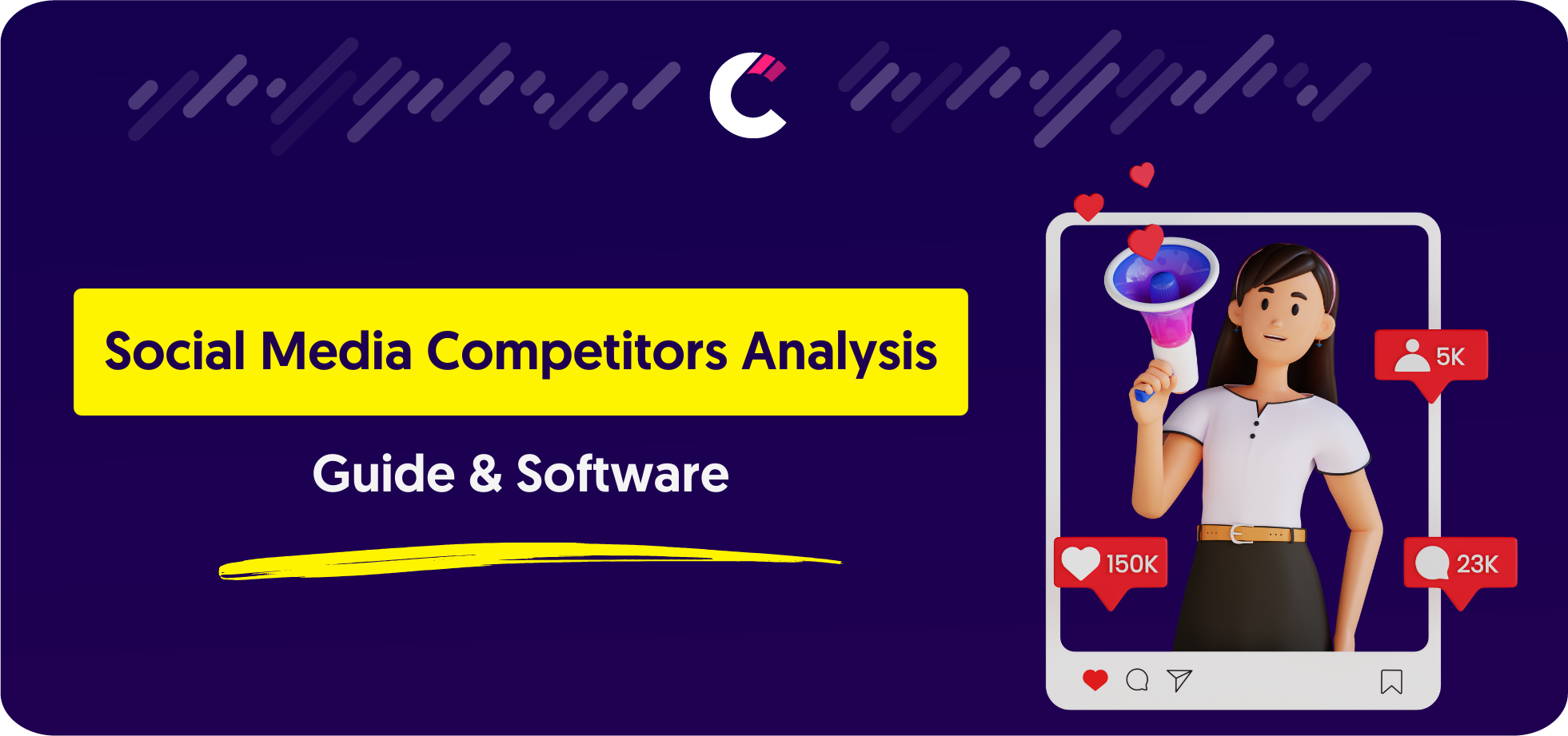
Diving into the world of social media can often feel like stepping into a bustling marketplace. Everywhere you look, there’s a flurry of activity, with each brand vying for attention. In this dynamic environment, understanding your competitors becomes crucial, and that’s where social media competitor analysis tools come into play. Think of them as your digital periscope, allowing you to peek into the strategies of your rivals. In this comprehensive guide, we’ll explore what social media competitor analysis is, its benefits, and introduce you to the best tools available in 2024. Whether you’re a seasoned marketer or just dipping your toes into social media waters, this guide will equip you with the insights you need to stay ahead in the game.
Social media competitor analysis is a thorough and strategic examination of your competitors’ presence and performance on various social media platforms. This process involves a detailed study and comparison of your competitors’ social media activities against your own. The focus extends beyond basic metrics like post frequency and follower count. It includes a deeper analysis of engagement rates, content quality, audience growth, and the overall effectiveness of their marketing campaigns. By engaging in this type of analysis, you can gain a comprehensive understanding of your own position in the digital landscape. It allows you to identify both the successful elements of your competitors’ strategies and areas where they may be lacking. This knowledge is crucial for developing a well-informed and competitive social media strategy that can adapt to trends and capitalize on opportunities in the marketplace.
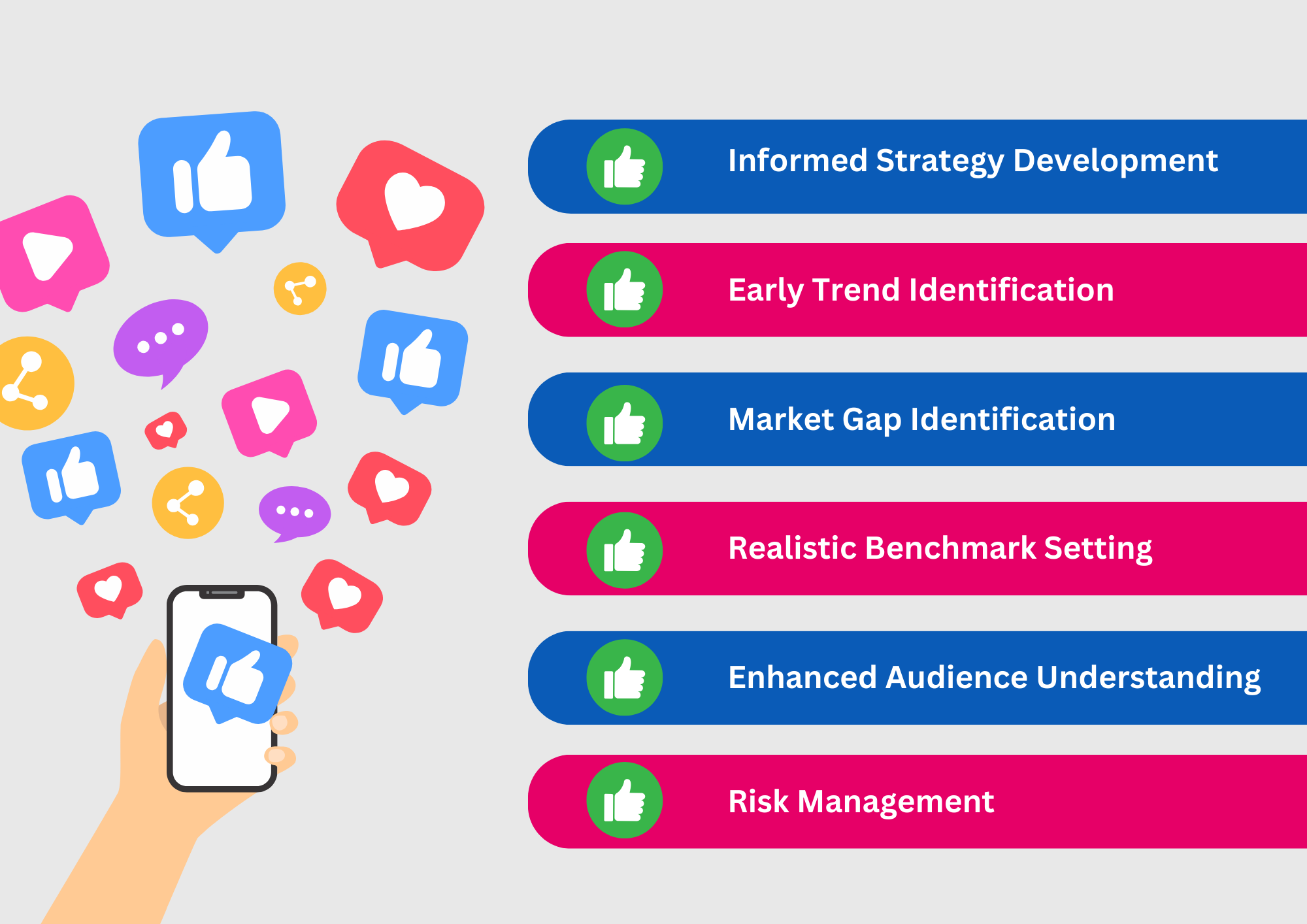
Embarking on a social media competitive analysis unlocks several key advantages for businesses aiming to strengthen their digital strategy. Here’s a breakdown of the most significant benefits:
In essence, a comprehensive social media competitive analysis is not just about keeping tabs on your competitors; it’s a strategic approach to elevate your brand’s social media presence, adaptability, and overall success.
As we head into 2024, the selection of social media competitor analysis tools is more diverse and powerful than ever. Here’s a look at some of the top tools in the market, each offering unique features to help businesses stay ahead in the competitive digital landscape.
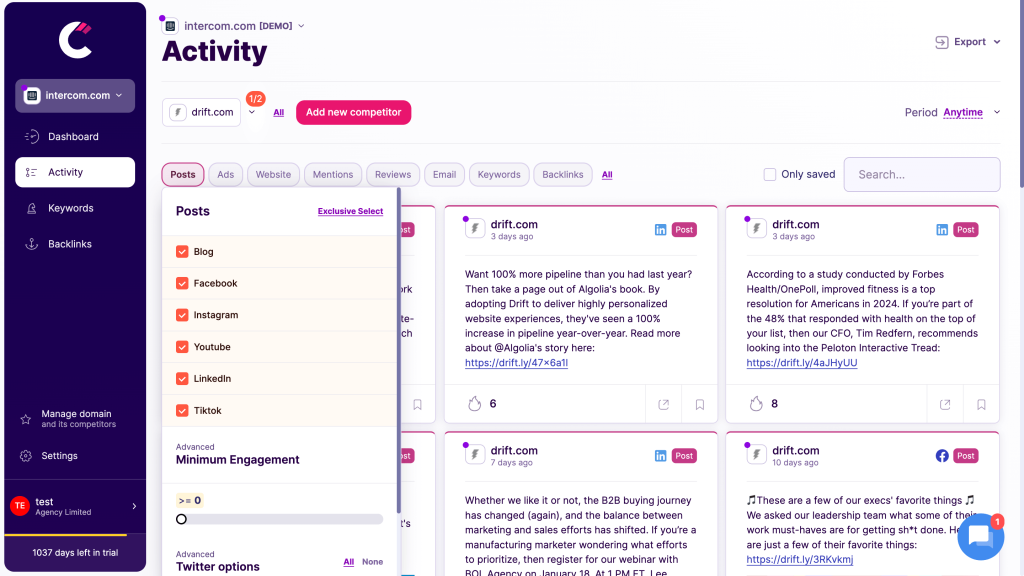
Competitors App is a tool that allows Marketers to track all their competitors’ marketing activities. It allows you to track social media and blog posts, emails, ads, website updates and new pages, social mentions, keywords and backlinks, competitor reviews.

A favorite for its deep analytics, Sprout Social provides valuable insights into competitor performance across multiple platforms, offering detailed reports on various metrics.
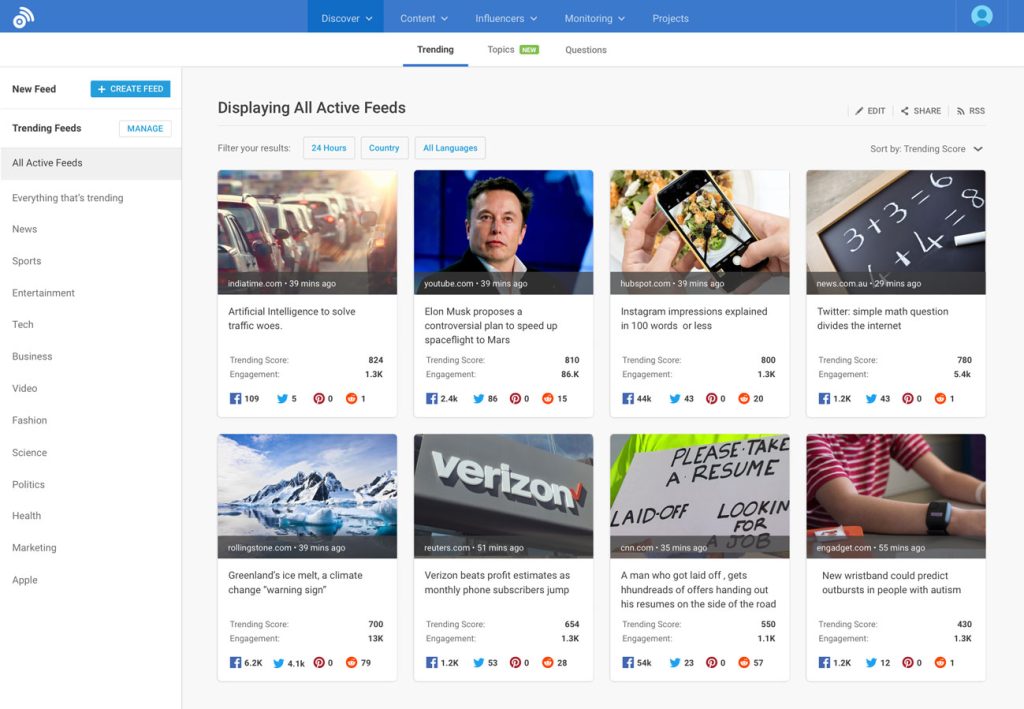
BuzzSumo is a leader in content analysis, helping you understand the most effective content in your industry, including that of your competitors.
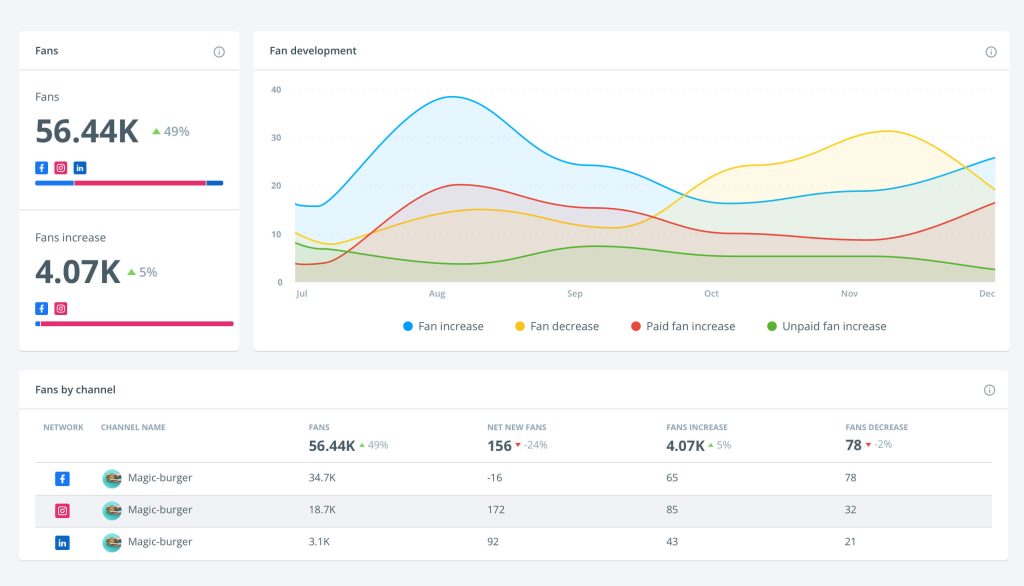
This tool excels in sentiment analysis and trend discovery, using advanced AI to analyze social conversations and offer insights into public perception and emerging trends.
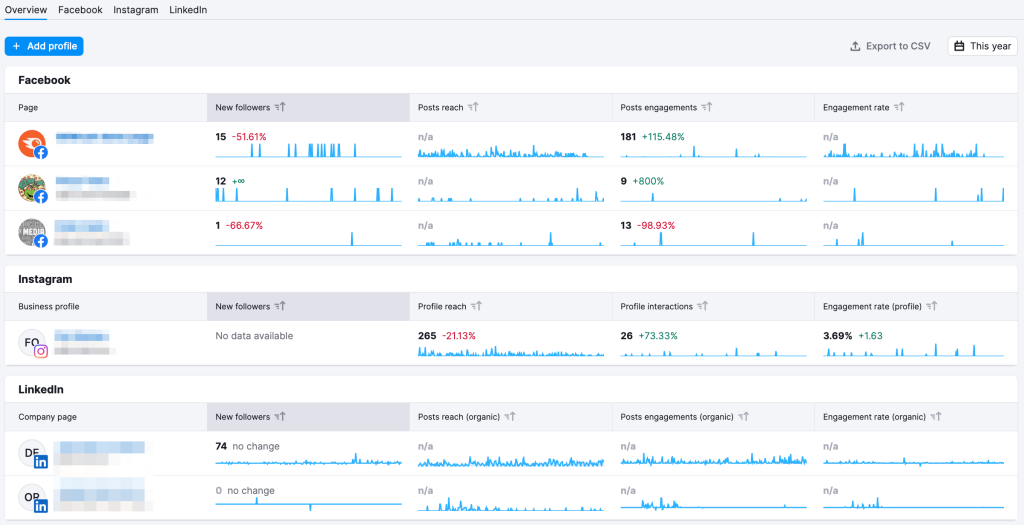
Known for its SEO capabilities, SEMrush also offers robust social media analysis tools, integrating social media insights with overall digital marketing data.
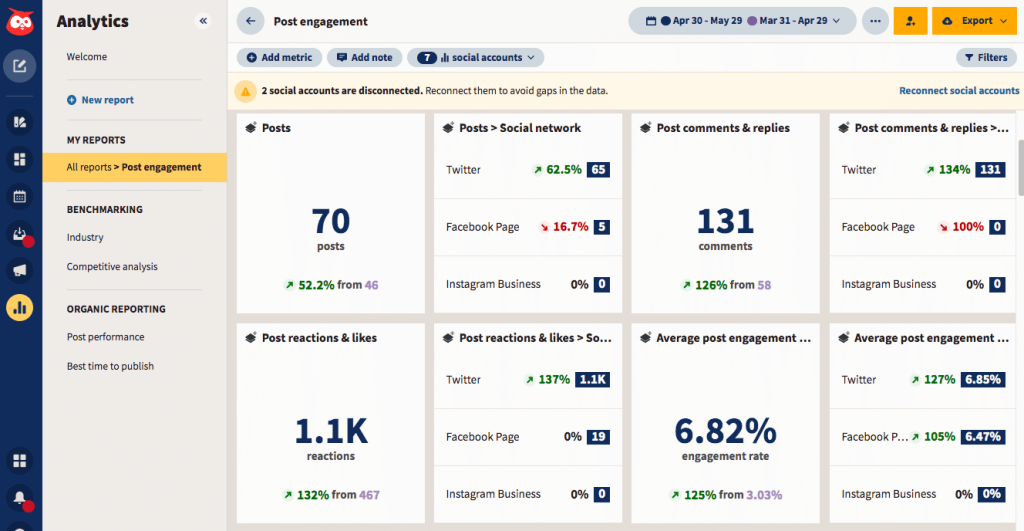
A well-known tool for content scheduling, Hootsuite also provides competitive analysis features, making it a versatile choice for social media management and monitoring.
Each tool brings something different to the table. Your choice should depend on the specific needs of your business, such as the platforms you use, the depth of analysis required, and your budget.
For businesses on a tight budget or those just starting out with social media competitor analysis, there are several free tools available that offer valuable insights without the cost. Here are some noteworthy options:

Competitors App offers a free trial that provides basic functionalities for tracking competitors’ social media activities. It’s a great starting point for small businesses or startups. You can use it for 15 days and decide if you want to continue your subscription.

Known for its content scheduling capabilities, Hootsuite’s free plan also includes basic analytics that can help in understanding your competitors’ social media performance.
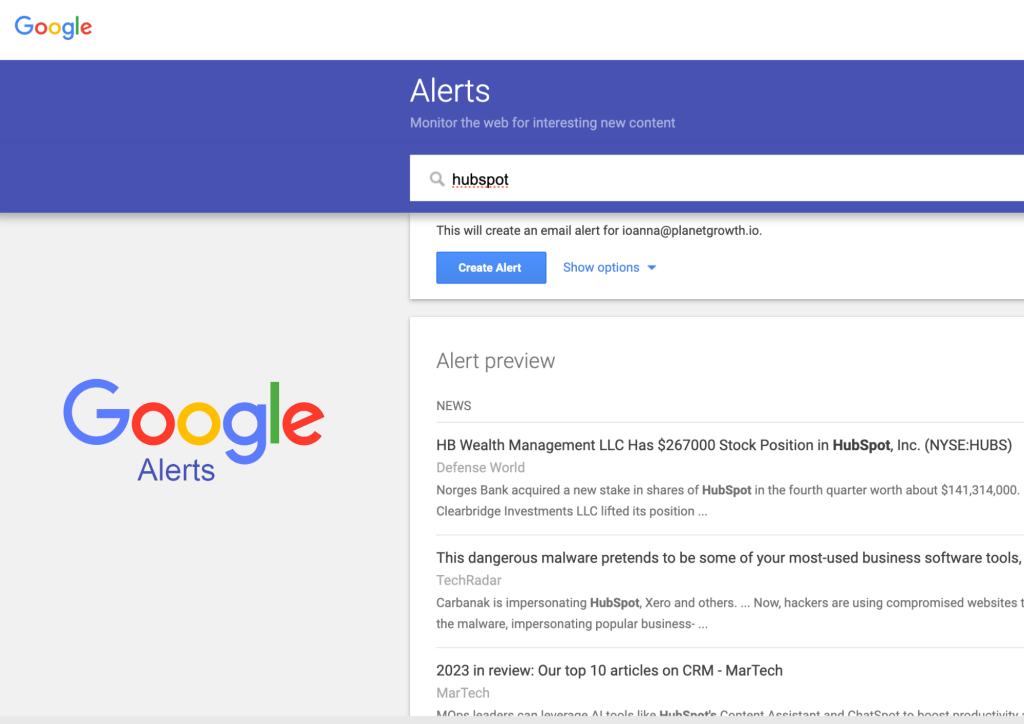
While not exclusively a social media tool, Google Alerts can be used to monitor mentions of your competitors across the web, including on some social platforms.
These free tools, while may not offer the comprehensive features of paid versions, are still incredibly useful for getting started with social media competitor analysis. They can provide valuable insights that help shape your initial social media strategies and understand the competitive landscape.
Choosing the right social media competitive analysis tool is crucial for gaining accurate and actionable insights. To ensure you select the best tool for your business needs, consider the following criteria:
Features and Functionality: Determine what features are most important for your strategy. Do you need in-depth analytics, real-time monitoring, sentiment analysis, or a combination of these? Make sure the tool you choose excels in these areas.
Ease of Use: The tool should have an intuitive interface. You don’t want to spend excessive time trying to navigate a complicated platform. A user-friendly tool will save you time and frustration.
Integration Capabilities: Consider how well the tool integrates with other platforms and tools you use. Seamless integration can significantly enhance efficiency and data accuracy.
Scalability: As your business grows, your needs will change. Choose a tool that can scale with your business, offering more advanced features and capabilities as your requirements evolve.
Customer Support: Good customer support is crucial. Ensure that the tool you select has a responsive support team to assist you with any issues or queries.
Cost vs Value: Evaluate the pricing of the tool against the features and value it offers. A more expensive tool might offer more comprehensive features that justify the cost, especially for larger businesses.
Reviews and Recommendations: Look for reviews and recommendations from other users, particularly those in a similar industry or with similar needs to yours. This can provide valuable insights into the tool’s performance and suitability.
Data Accuracy and Reliability: The tool should provide accurate and reliable data. Inaccurate data can lead to misguided strategies and decisions.
Reporting Capabilities: Consider the quality and depth of the reports generated by the tool. Good reporting capabilities can save time and make it easier to understand and share insights with your team.
Compliance and Security: Ensure the tool complies with relevant data privacy laws and has robust security measures in place to protect your data.
By carefully evaluating potential tools against these criteria, you can make an informed decision that aligns with your business objectives and enhances your social media competitive analysis efforts.
Executing a social media competitive analysis is a critical process for understanding your position in the market and shaping an effective strategy. This involves identifying who your competitors are, tracking their social media activities, understanding key metrics for analysis, and focusing on platform-specific strategies, such as on Facebook.
The first step in a competitive analysis is to identify your direct and indirect competitors on social media. Direct competitors are businesses that offer similar products or services, while indirect competitors may cater to the same audience but with different offerings. Tools like Competitors.app can help streamline this process by providing insights into similar businesses and their online presence.
Once you’ve identified your competitors, the next step is to track their activities across social media platforms. This includes observing their posting frequency, content types, engagement tactics, and promotional strategies. Tools like Competitors.app allow you to monitor these activities in real-time, giving you up-to-date information on your competitors’ strategies.
Analyzing key metrics is essential to understand your competitors’ performance and what drives their social media success. These metrics include:
Engagement Rate: This metric goes beyond just counting likes and shares. It measures how actively involved your audience is with your content. Engagement rate is often calculated as the total number of interactions (likes, shares, comments) divided by the number of followers or reach, times 100. It’s a key indicator of how well your content resonates with your audience.
Audience Growth Rate: This measures the speed at which your brand’s following is increasing on social media. Tracking this over time can provide insights into how effective your outreach strategies are. It’s calculated by comparing the increase in followers over a specific period to the total number of followers.
Conversion Rate: This is crucial for understanding how social media activity translates into tangible actions, like purchases, sign-ups, or downloads. Conversion rate is calculated by dividing the number of conversions by the total number of visitors, then multiplying by 100. This metric helps in assessing the ROI of social media campaigns.
Share of Voice (SOV): SOV compares your brand’s presence on social media to that of your competitors. It involves measuring the number of mentions (including posts, comments, and shares) your brand receives in comparison to competitors. This metric is crucial for understanding your brand’s visibility and position in the market.
Sentiment Analysis: This goes beyond counting positive or negative comments. Advanced sentiment analysis involves using AI tools to gauge the overall sentiment of social media mentions, whether they’re positive, negative, or neutral. This helps in understanding public perception of your brand and can guide crisis management and messaging strategies.
A social media competitor audit is a concise but thorough review of your competitors’ social media presence. Key focus areas include:
This short-form audit provides a snapshot of your competitors’ social media strategies, helping to identify quick wins and areas for improvement in your own approach.

Conducting a Facebook competitor analysis involves examining several key aspects of your competitors’ presence and strategy on the platform. Here’s what to focus on:
Page Engagement: Look at how much interaction (likes, comments, shares) each post receives. High engagement rates often indicate content that resonates well with the audience.
Content Strategy: Analyze the types of content your competitors are posting. Are they using videos, images, or text posts? Which types are getting the most engagement?
Posting Frequency and Timing: Note how often your competitors post and at what times. This can give you insights into the optimal posting schedule for maximum visibility and engagement.
Audience Growth Rate: Monitor how quickly your competitors’ Facebook followers are growing. This can indicate the effectiveness of their content and engagement strategies.
Campaigns and Promotions: Keep an eye on any special campaigns or promotions they run. How do these campaigns perform in terms of engagement and audience interaction?
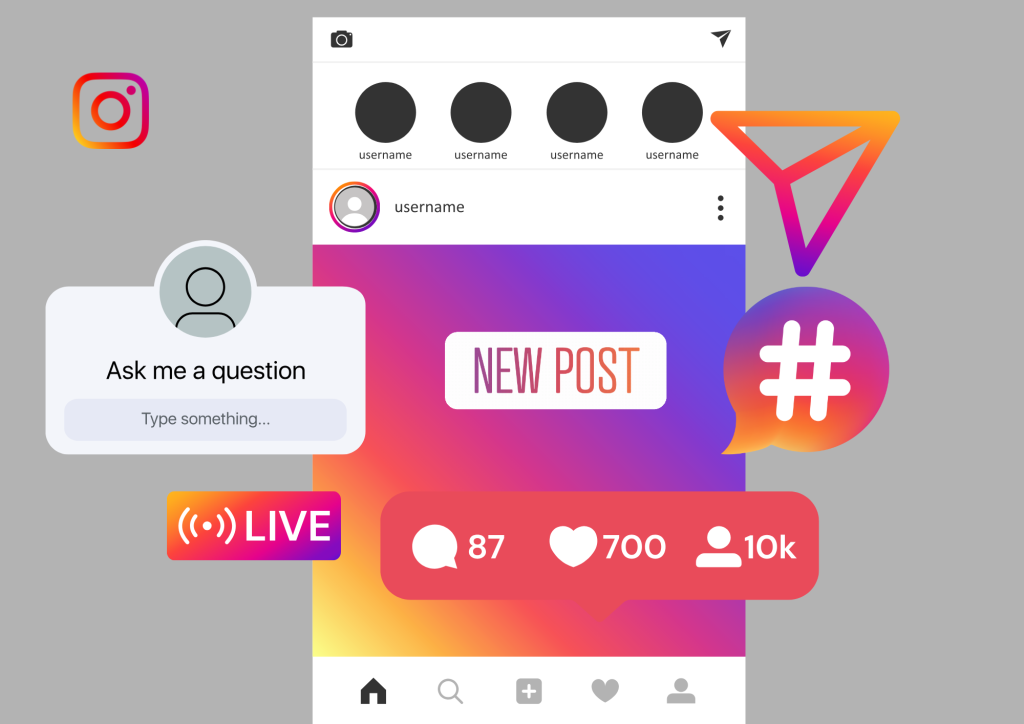
Instagram competitor analysis requires a different focus due to the unique nature of the platform. Here are key aspects to consider when analyzing your competitors on Instagram:
Visual Aesthetics: Instagram is highly visual, so take note of the overall aesthetic of your competitors’ profiles. How do they curate their feed? Is there a consistent color scheme or theme?
Hashtag Usage: Pay attention to the hashtags your competitors use. Which ones are they using frequently, and how does this affect their post’s visibility and engagement?
Stories and Reels: Analyze how competitors use Instagram Stories and Reels. Are they leveraging these features for promotions, behind-the-scenes content, or user engagement?
Influencer Collaborations: Identify any partnerships with influencers. How do these collaborations impact engagement and follower growth?
Engagement with User-Generated Content: Look at how competitors engage with and possibly repost content from their followers. This can be a strong indicator of community-building efforts.
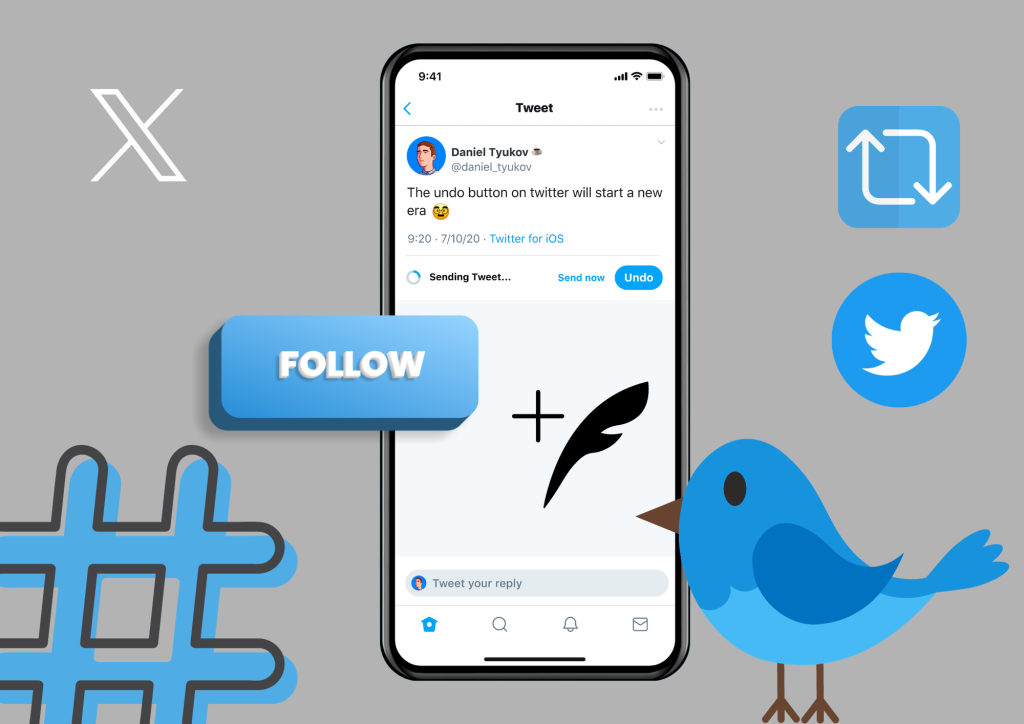
Twitter, with its unique dynamics and fast-paced nature, requires a distinct approach for competitor analysis. Here’s what to focus on when analyzing your competitors on Twitter:
Tweet Types and Content: Examine the variety of tweets your competitors post. Are they mostly sharing original content, retweeting, or engaging in conversations? Look at the balance between promotional content, informative tweets, and user engagement.
Hashtag Strategy: Analyze the hashtags they frequently use. Are they tapping into trending topics or creating brand-specific hashtags? How effective are these in increasing the reach of their tweets?
Engagement Patterns: Look at the level of engagement (likes, retweets, replies) each tweet receives. Pay special attention to tweets that receive higher than average engagement to understand what resonates with their audience.
Follower Growth Trend: Observe how their follower count has changed over time. Rapid growth can indicate successful campaigns or content strategies.
Twitter Threads: Assess how they use Twitter threads. Are they using threads for storytelling, detailed explanations, or to share a series of related content?
Conducting a social media competitive analysis can be streamlined and efficient with the use of Competitors App that helps you track social media pages easily. . Here’s how to do it:
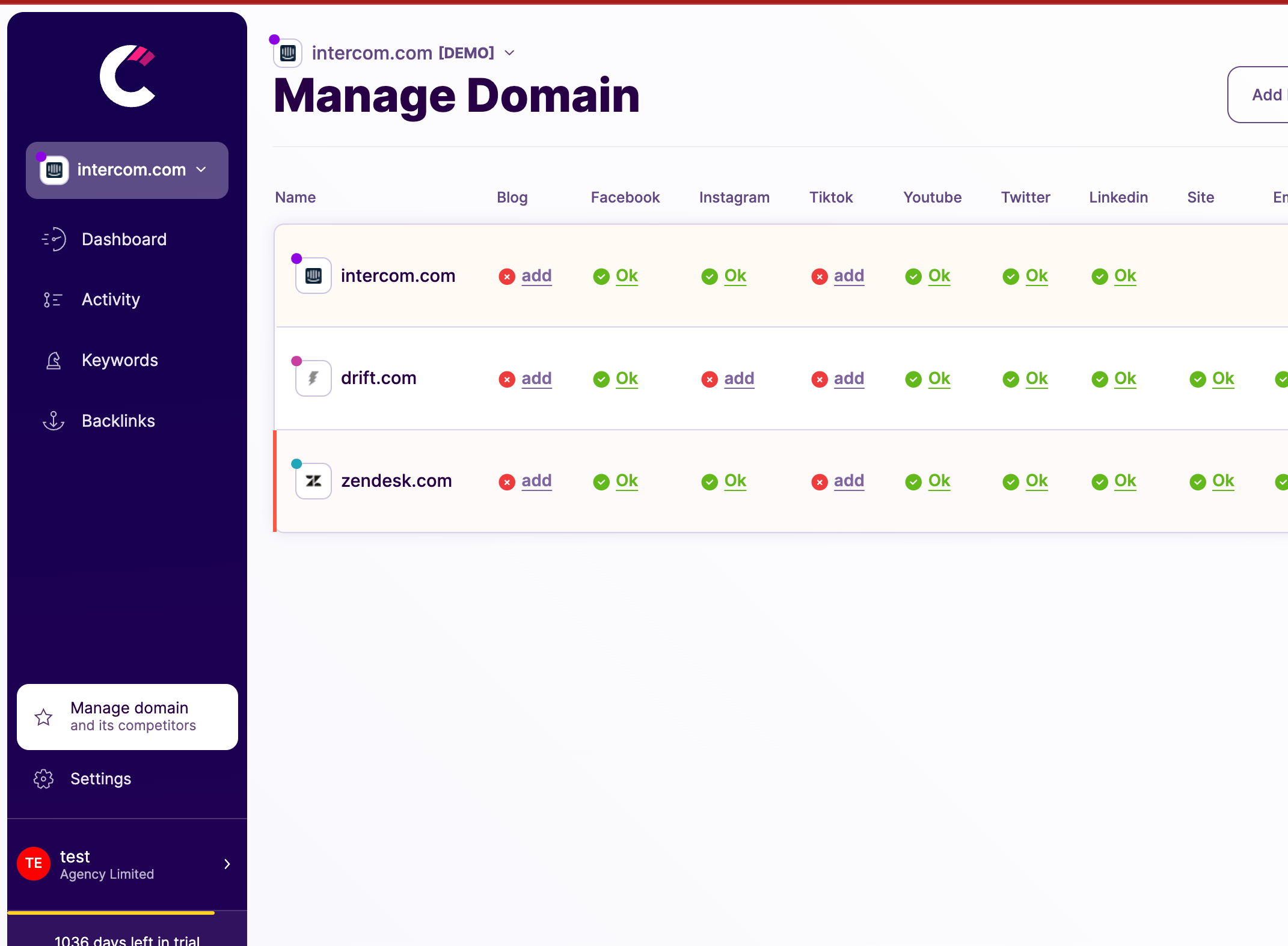
The first step is to identify who your direct and indirect competitors are. These are the businesses that are vying for the same audience as you.

Once you have a list of your competitors, add them to Competitors App. This is a straightforward process that allows you to begin tracking their activities.

In the app, navigate to the activity timeline. This feature provides a chronological view of your competitors’ social media actions.
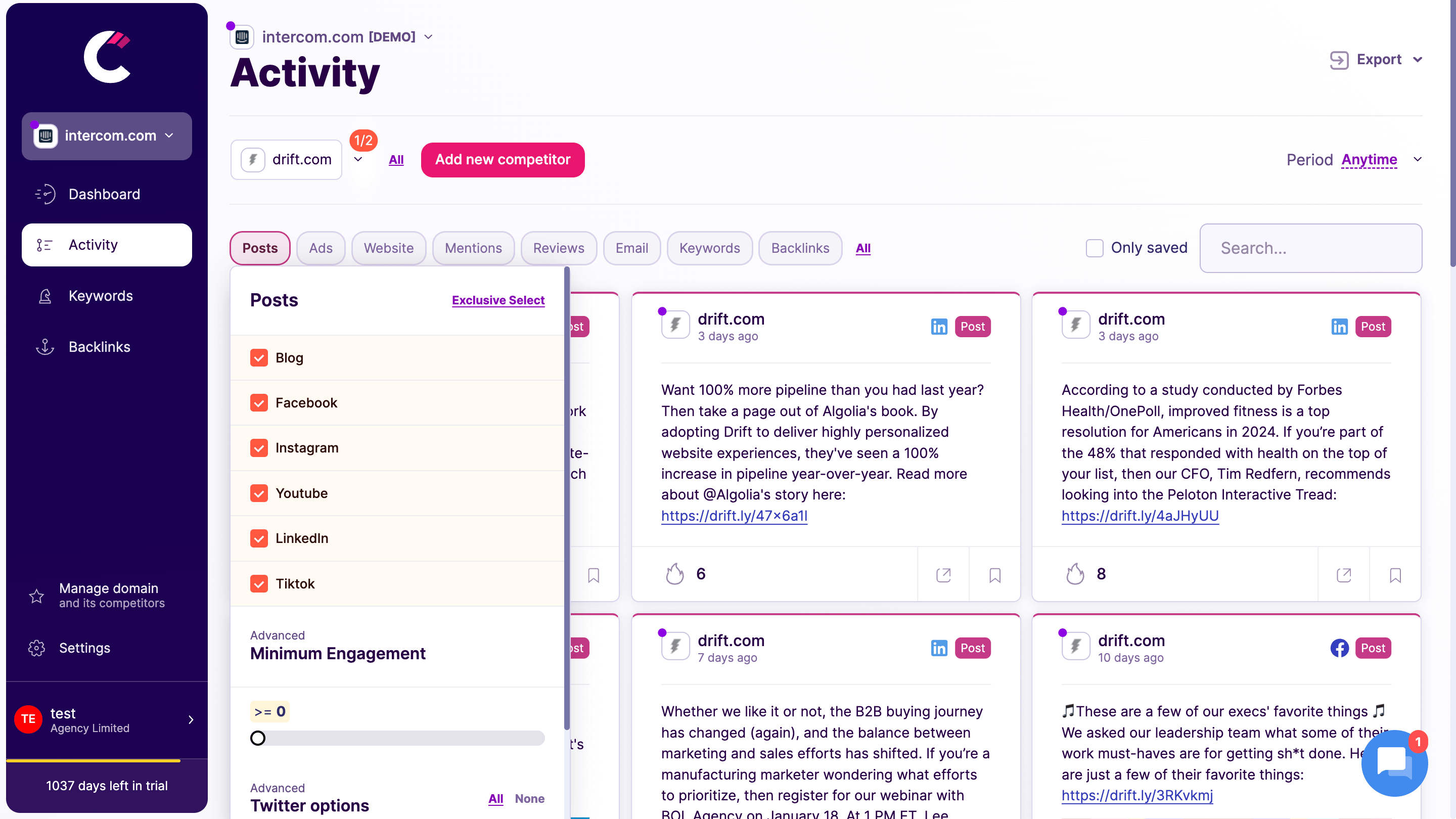
Within the timeline, focus on the posts section. Here you can review all the social media posts made by your competitors.
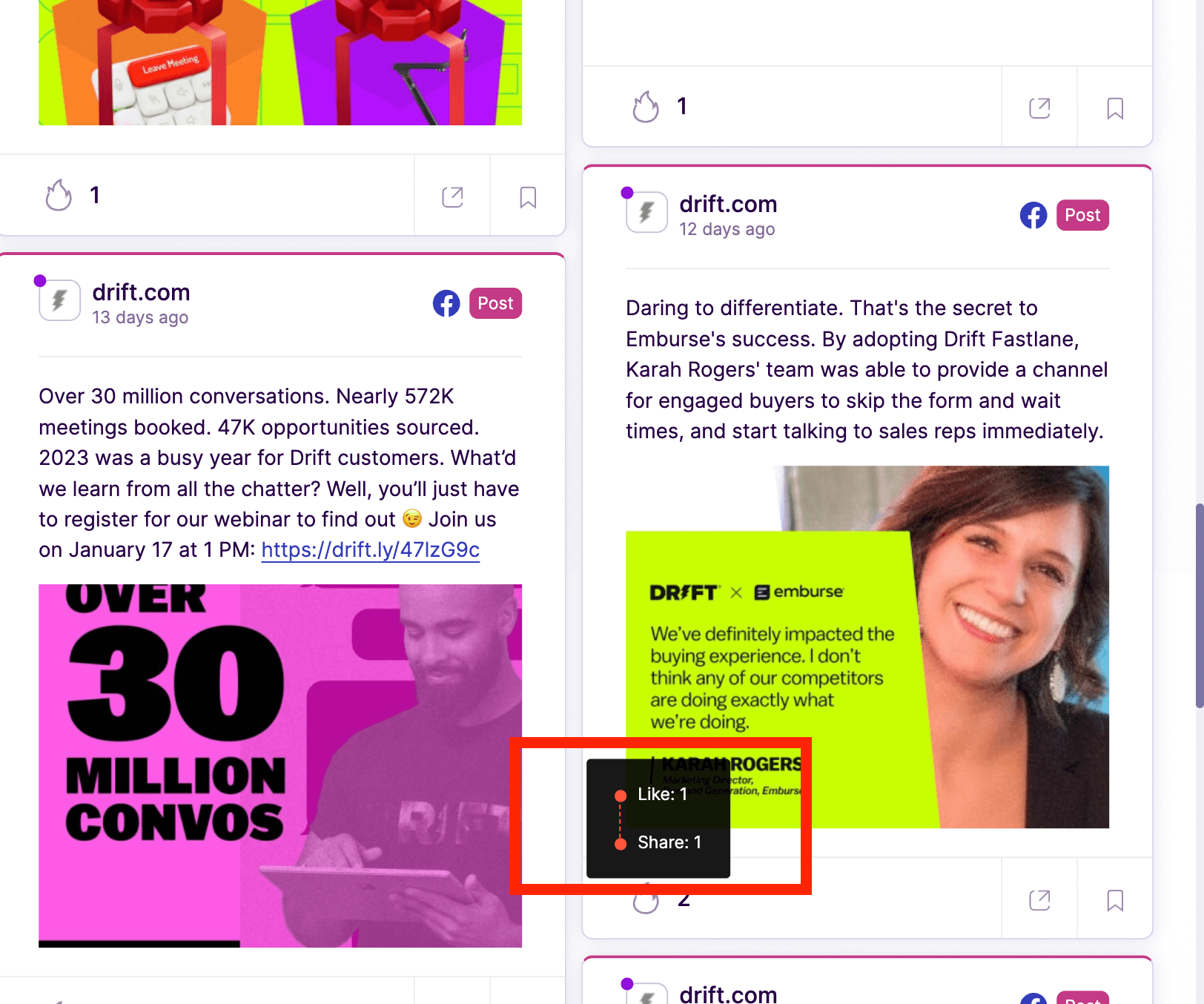
Examine the content of these posts. Competitors App provides detailed metrics like engagement, likes, shares, and comments, which are crucial for understanding what types of posts are successful or not.

The dashboard in Competitors App offers a comprehensive view of when your competitors are receiving high levels of engagement. You can see which weeks or months they are most active and successful, giving you insights into their posting strategy.
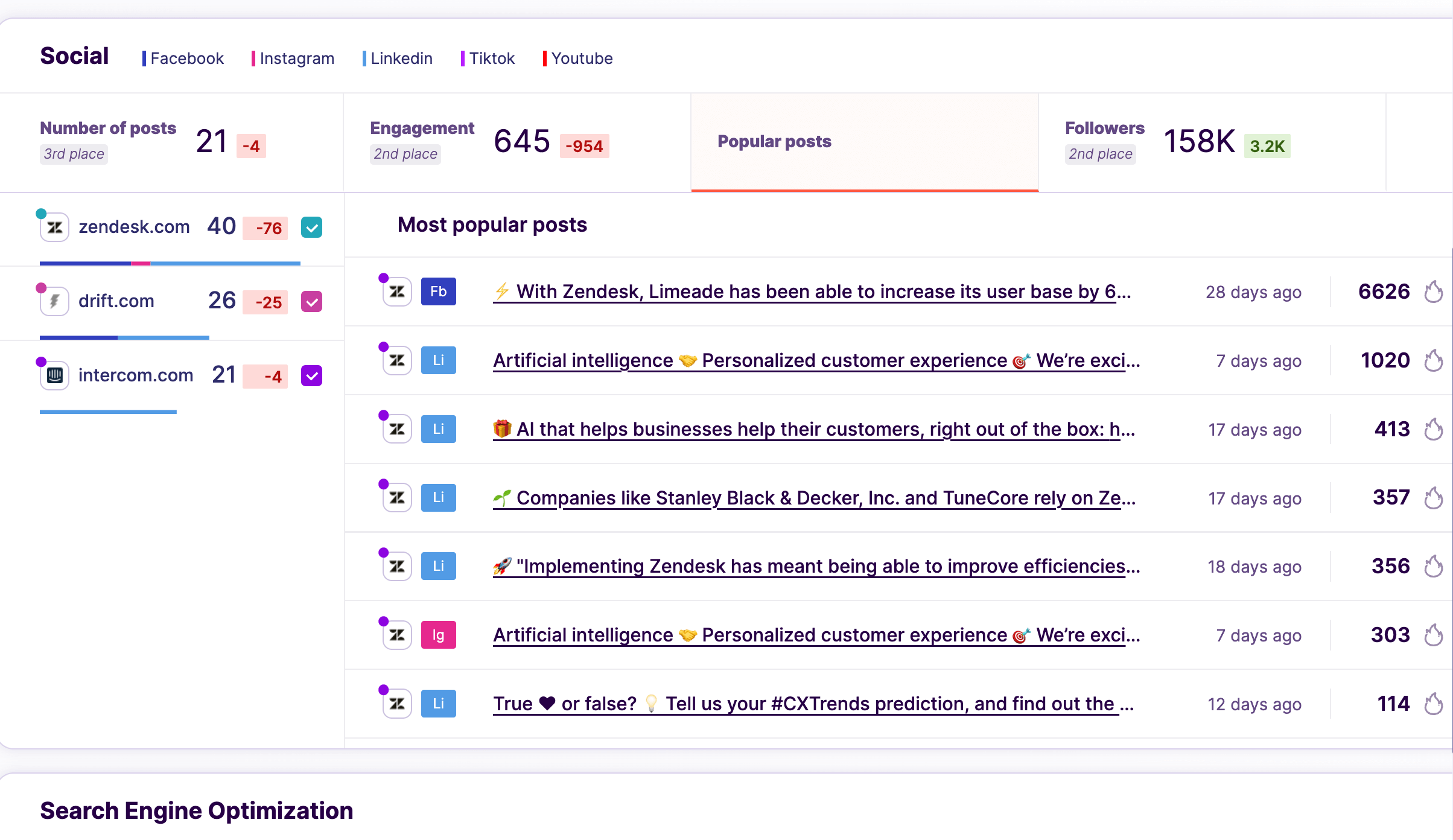
Through this analysis, you'll gain an understanding of which posts resonate with the audience and which don’t. This helps in shaping your content strategy.
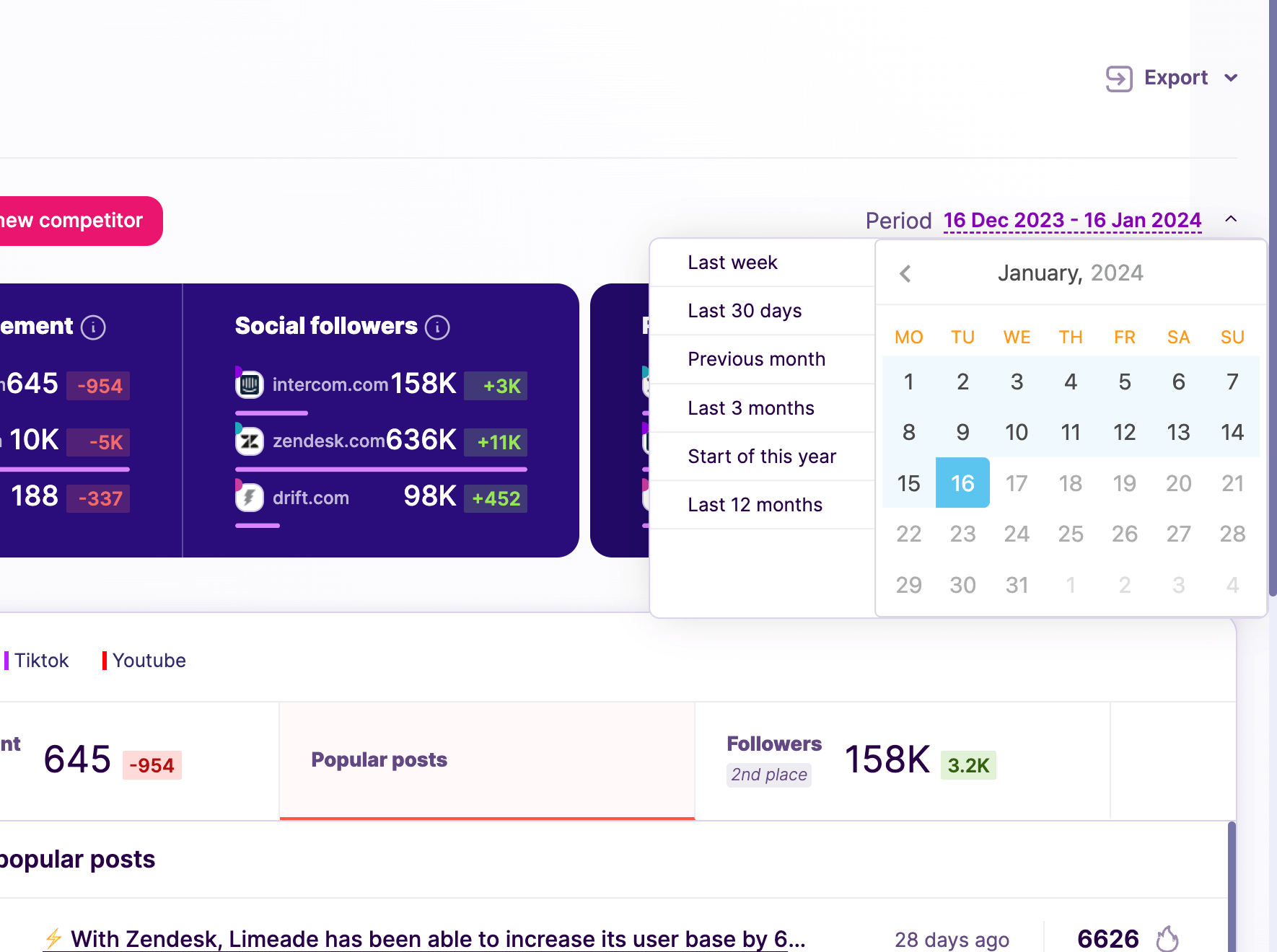
By observing the times when your competitors receive the most engagement, you can better plan when to release your own posts for maximum impact.
By following these steps with Competitors App, you will conduct a thorough analysis of your competitors’ social media strategies. This process not only provides insights into what works for them but also helps you refine your own approach to achieve better engagement and results.
To effectively compete and excel in the social media landscape, it’s essential to have a deep understanding of your competitors’ strategies. Unveiling their approaches requires a combination of analytical techniques and strategic thinking. This section will guide you through evaluating their performance, conducting a SWOT analysis, and understanding these concepts through a practical example.
Evaluating your competitors’ social media performance involves looking at quantitative and qualitative metrics. Key aspects include their follower growth rate, engagement levels (likes, comments, shares), content quality and relevance, response time to audience interactions, and the effectiveness of their campaigns. Tools like Competitors App can automate much of this process, providing comprehensive insights into these metrics. Regularly tracking these parameters can reveal trends and strategies contributing to their social media success or shortcomings.
Conducting a SWOT analysis (Strengths, Weaknesses, Opportunities, Threats) of your competitors’ social media presence can provide strategic insights. Strengths and weaknesses are internal factors, like content quality or customer engagement strategies, whereas opportunities and threats are external, such as emerging social media trends or changes in platform algorithms. This analysis helps in identifying areas where your competitors excel and where they may be vulnerable, offering opportunities for you to differentiate your brand.

Based on the insights from the Competitors App, here’s what we can focus on regarding social media performance:
Zendesk is churning out a high volume of content with 40 posts, but the steep drop in engagement suggests the content may not be hitting the mark. It’s crucial to analyze the nature of these posts and audience responses to pinpoint what’s not working.
Intercom has fewer posts, yet they’ve seen an uptick in followers. This hints at a more effective engagement strategy or higher-quality content, which is drawing in and retaining their audience.
Drift shows a decrease in both posts and engagement. However, they’re still growing their follower base. This might imply that their posts, though fewer, are impactful or that other factors are at play in gaining new followers.
Actionable Steps:
Content Audit: Dive into the content specifics of Zendesk’s posts to understand the engagement drop.
Quality over Quantity: Look at Intercom’s content strategy for lessons on how to engage effectively with fewer posts.
Engagement Tactics: Assess Drift’s approach to see what’s working in terms of follower growth despite lower engagement and posting frequency.
This analysis emphasizes the importance of a balanced approach to social media, where both the quantity of posts and the quality of engagement play crucial roles in building a strong online presence.

Get ahead in your social media game with Competitors.app’s free analysis template. This streamlined tool equips you with essential elements for a thorough competitor analysis, including profile information, audience demographics, content strategy, engagement metrics, and more. Efficiently assess your rivals’ social media tactics, identify key opportunities, and craft a winning strategy. Download now and transform your social media approach!
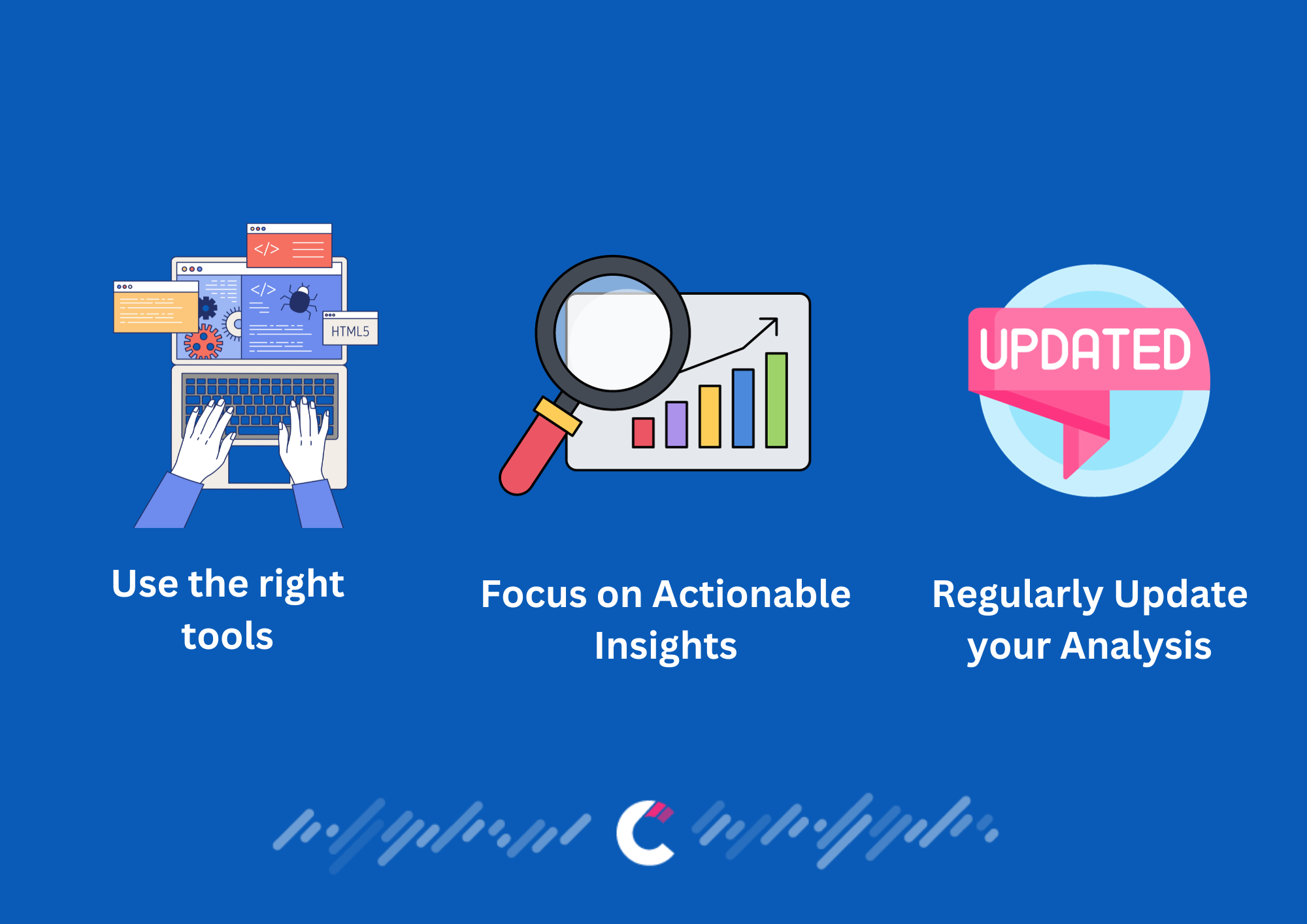
Conducting a competitive analysis in social media marketing is essential for staying ahead in an increasingly crowded digital space. To ensure your analysis is as effective as possible, here are three key tips:
Use the Right Tools: The importance of utilizing the right tools for competitive analysis cannot be overstated. Tools like Competitors.app provide a wealth of data about your competitors’ social media activities. These tools can track various metrics such as engagement rates, follower growth, and content strategy effectiveness. The right tool can save time and offer insights that might be missed with manual analysis.
Focus on Actionable Insights: While collecting data is crucial, the real value lies in how you interpret and use this information. Focus on actionable insights that can directly influence your strategy. For instance, if a competitor’s video content is performing exceptionally well, consider how you can incorporate similar strategies in your content plan. Look for patterns in posting times, content types, and engagement tactics that you can adapt and test in your own strategy.
Regularly Update Your Analysis: The social media landscape is dynamic, with trends and algorithms constantly changing. Regularly updating your competitive analysis ensures that you stay current with these changes and adjust your strategies accordingly. This might involve reassessing your competitors, as new players can emerge, or existing ones might change their tactics. A consistent approach to updating your analysis helps in maintaining a clear understanding of the competitive landscape.
By following these tips, you can conduct a more effective and result-oriented social media marketing competitive analysis, which can significantly contribute to the success and growth of your social media presence.

Creating a competitive social media strategy is about more than just understanding what your competitors are doing; it’s about leveraging this knowledge to build a unique and effective approach that sets your brand apart. Here are key steps to craft a strategy that stands out in the competitive social media landscape:
Define Clear Objectives: Start by setting clear, measurable goals for what you want to achieve with your social media presence, whether it’s increasing brand awareness, boosting sales, or improving customer engagement. Your objectives should align with your overall business goals and be specific, measurable, attainable, relevant, and time-bound (SMART).
Leverage Competitive Insights: Use insights gathered from your competitive analysis to inform your strategy. This includes understanding what content resonates with your audience, the most effective posting times, and engagement tactics that work. Adapt these insights to fit your brand’s voice and values.
Identify Your Unique Selling Proposition (USP): Determine what sets your brand apart from competitors. It could be your product quality, customer service, brand story, or a unique approach to social media content. Highlighting your USP in your social media strategy will help differentiate your brand.
Engage and Grow Your Audience: Develop a content strategy that not only appeals to your target audience but also encourages interaction. This can include user-generated content, engaging with followers through comments and messages, and creating content that sparks conversations.
Innovate and Experiment: Don’t be afraid to try new things. This could be experimenting with new social media features, different content formats, or emerging platforms. Monitoring competitors can show you what’s working in your industry, but innovation will set you apart.
Measure and Adjust: Continuously monitor the performance of your social media activities. Use analytics tools to track progress towards your goals and be prepared to adjust your strategy based on these insights. This might involve refining your content, changing your posting schedule, or rethinking engagement tactics.
Stay Up-to-Date with Trends: The social media landscape is always evolving. Stay informed about the latest trends and platform updates to ensure your strategy remains relevant and effective.
By following these steps, you can develop a competitive social media strategy that not only keeps up with your industry but also positions your brand as a leader and innovator on social media.

In conclusion, effective social media competitor analysis is crucial for staying ahead in today’s digital landscape. With the right tools and strategies, such as the Competitors.app template, you can gain valuable insights into your competitors’ tactics, refine your approach, and elevate your social media presence. Remember, knowledge is power in the dynamic world of social media, and staying informed is key to success.
The best tool depends on your specific needs, budget, and the scale of your operations. If you require comprehensive analytics and can invest in a premium solution, tools like Sprout Social or SEMrush are excellent choices. Competitors App is also a great option for its focused competitor tracking features.
For businesses looking for a free tool, both Hootsuite and Compettiors offer limited free trials that can be useful for basic analysis. Google Alerts, while not a dedicated social media tool, is also helpful for monitoring online mentions of your competitors.
Competitors App stands out for its dedicated focus on monitoring competitors' social media activities. It provides detailed insights into competitors' strategies, making it an ideal choice for businesses prioritizing competitor analysis.
These tools help you understand your competitors' strategies, identify industry trends, uncover gaps in their approach, and set realistic benchmarks for your own social media performance. This can lead to more informed strategic decisions and improved social media engagement.
The cost varies widely based on the tool's features and capabilities. Some offer free plans or trials, while premium solutions can be quite expensive. It's important to choose a tool that offers the best value for your specific needs and budget.
Regular analysis is recommended. Monthly reviews can keep you updated on competitor strategies and market trends. However, the frequency can be adjusted based on the dynamics of your industry and the pace of changes in social media trends.
Absolutely. Even for small businesses, understanding what competitors are doing on social media can inform more effective strategies and help avoid common pitfalls.
Use the insights gained to highlight your unique selling points (USPs) and fill gaps left by competitors. Tailor your content, engagement strategies, and campaigns to address areas where competitors are weak or absent.
It should be an ongoing process. The social media landscape and competitor tactics are constantly evolving, so regular analysis is necessary to stay competitive and relevant.